Bringing Some Fun and Friendly Competition to the College Classroom with Kahoot!
As teachers, we are often looking for new ways to diversify and enhance our teaching strategies. In the fall 2016 semester, I was introduced to Kahoot during a library information session with my Introduction to College English students, given by Nathalie Faure, the Library Technician at our college. The level of excitement and enthusiasm was such that it prompted me to try Kahoot with my first and second year students. I can attest that Kahoot is not only fun, easy to use and engages students, but it is also a tool that can be adapted to different levels and course content.
What is Kahoot?
Kahoot is an online questionnaire application that allows teachers to create quizzes, surveys or discussion questions to be answered by students. What makes Kahoot different from similar applications is the visual appeal and playfulness incorporated in the quizzes. Each quiz, called a “Kahoot,” is more engaging when played in a group setting as there is an element of friendly competition built into the game. The application is free for teachers and students, and simply requires that an account be created by the teacher who then provides the students with a PIN number.
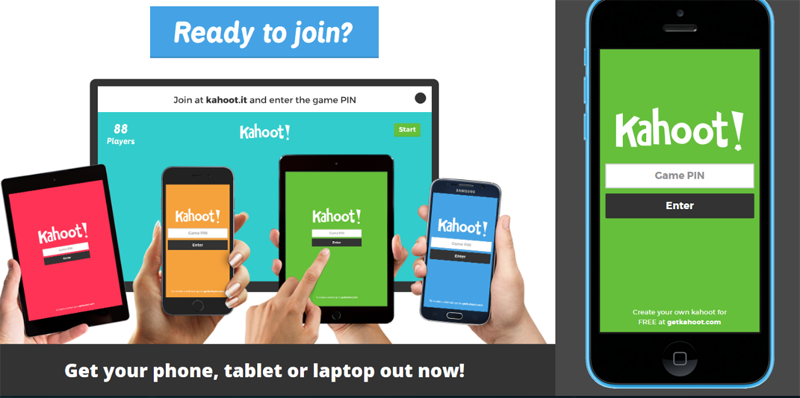
Students can use their mobile devices to play Kahoot by simply entering the PIN number provided by the teacher.
There are 4 different types of Kahoots that can be created:
- Quiz
- Discussion
- Survey
- Jumble
Getting started is as easy as selecting “Quiz,” giving it a title, a brief description, and then adding as many questions as desired. It should be noted that the platform allows users to make their Kahoots available to everyone registered with an account. Because of this, users have the option of keeping their Kahoot private or making it accessible to all. There is also a host of languages to choose from and quizzes can be personalized by adding a cover photo if desired.
Kahoots are created with multiple choice questions, where images and videos can be added to each question, making them more interactive and engaging. Indicating a correct answer is as simple as clicking on the check mark provided and more than one correct answer is possible. For each question, teachers select how long students will have to answer the question (between 5 and 120 seconds) and how many points are awarded for each correct answer. The average length of a quiz is between 10 and 20 questions.
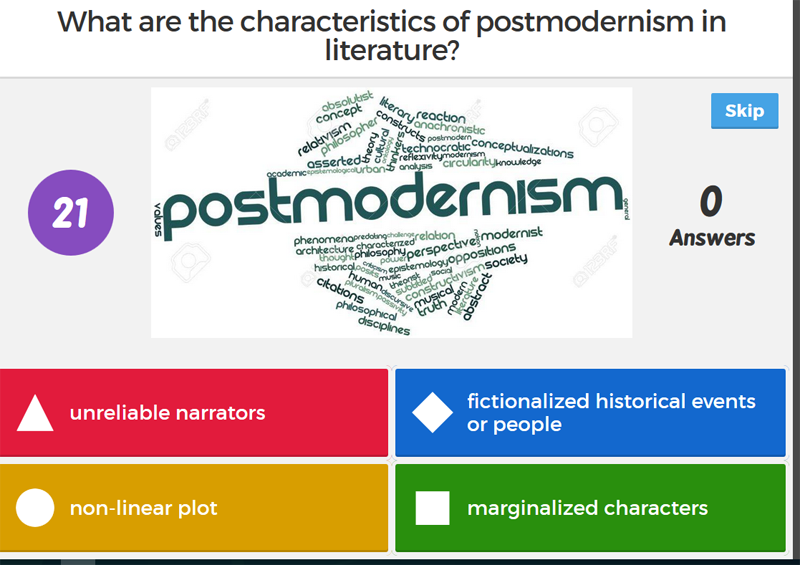
The view of a question as seen on the teacher’s screen. The purple circle on the left-hand side indicates how much time is left to answer the question. The students will only see the possible answers on their devices and select the one they believe is correct.
Once the questions are completed and the quiz has been saved, it is ready to be played. Through the dashboard, all of the quizzes that the user has created are visible and can be edited. Two different ways to play a Kahoot are Player vs. Player or Team vs. Team, and students can play on a computer or on any mobile device. The teacher selects which version will be played and then students go to Kahoot.it and enter the game PIN number.
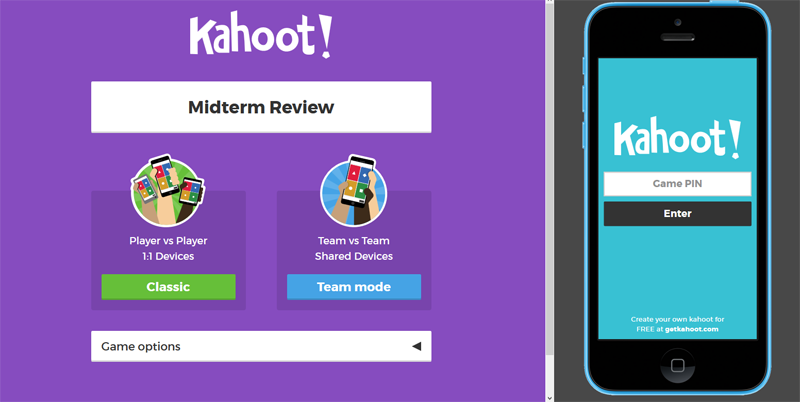
Before a quiz is played, the teacher selects the game options and then students log in and begin.
When they log in, students are asked to give their names or a nickname before starting the game. Their names are then visible in a list on the teacher’s screen. Students get immediate feedback and a bar-graph display shows the number of correct answers from all participants. The teacher controls when the next question starts and this gives the opportunity to review the students’ answers with the class before moving on. At the end of the quiz, the top 3 players are shown in a podium-style display.
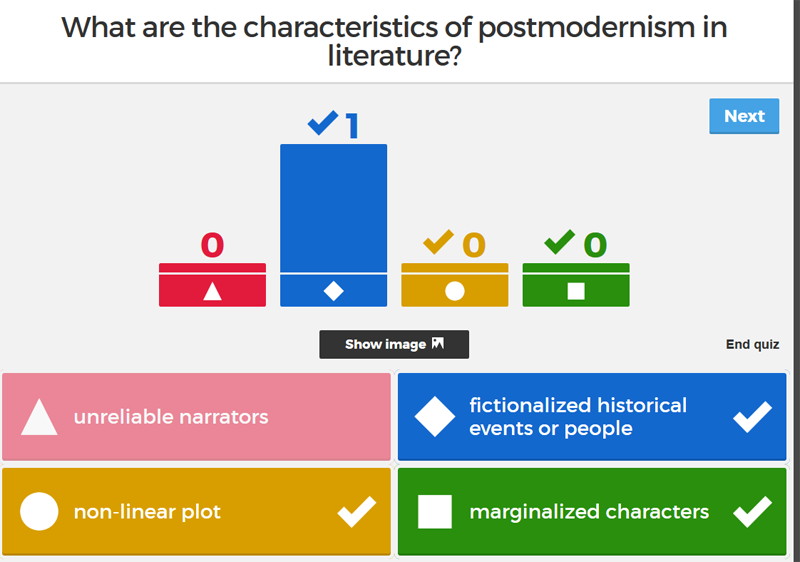
After each question is answered by everyone, a results page is shown as seen above.
Since there is an element of playful competition, and students know there is a limited amount of time to answer before the final podium, they really get involved in the game. To encourage more peer learning, the Team vs. Team option can be used as it allows students to discuss questions before answering. Two other worthwhile options available on Kahoot are Ghost Mode and Blind Kahoot. Ghost Mode enables students to replay the quiz and to reinforce their learning, and teachers can also share the link as homework. In contrast to reviewing content in Ghost-Mode, Blind Kahoot is used to introduce new material or concepts by building knowledge and reinforcing it with each question in the game.
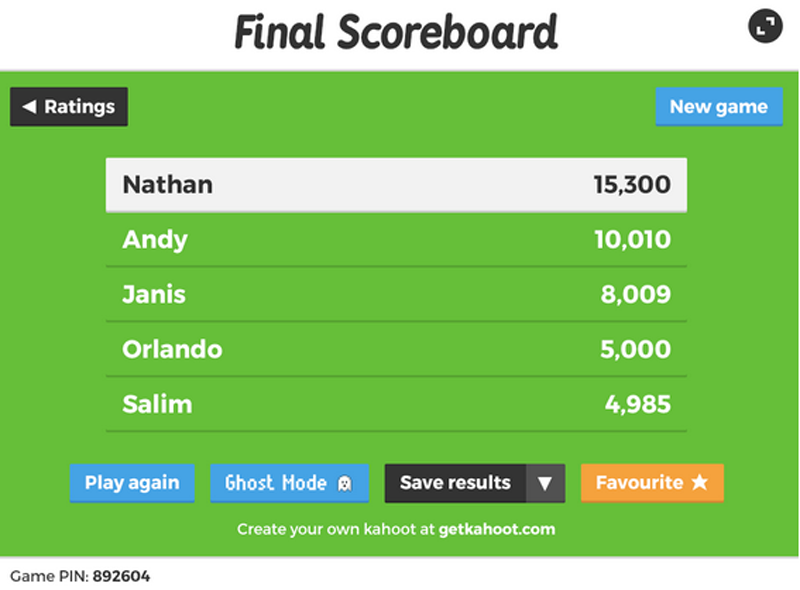
The Ghost Mode option is displayed on the Final Scoreboard page and on all saved games.
Kahoot for Diversifying Teaching Strategies
I have been using Kahoot mainly to create formative short quizzes in class as a:
- Warm up or ice breaker
- Way to introduce new content
- Review tool
I have found that these quizzes add variety to my teaching, break up class work and re-energise students.
Initially, I was not sure how college students would respond to Kahoot quizzes over a semester and whether it could be used as an effective learning tool. Another concern was not to overuse the application.
However, I can attest that my first and second year students still respond enthusiastically when I introduce or review content with Kahoot, and they often want to replay the quiz. Some students have even started using it at the end of their presentations to quiz their peers, demonstrating their appreciation for the tool.
Teachers can download results and save them if desired, but since I have been using this as a formative learning tool in class, I haven’t used this option as much. My quizzes focus on giving students immediate feedback, and this way, I can see if there is content I should review before proceeding. I have also found that the Team vs. Team option can highlight students’ comprehension of the subject matter as they actively discuss and decide how to answer the questions.
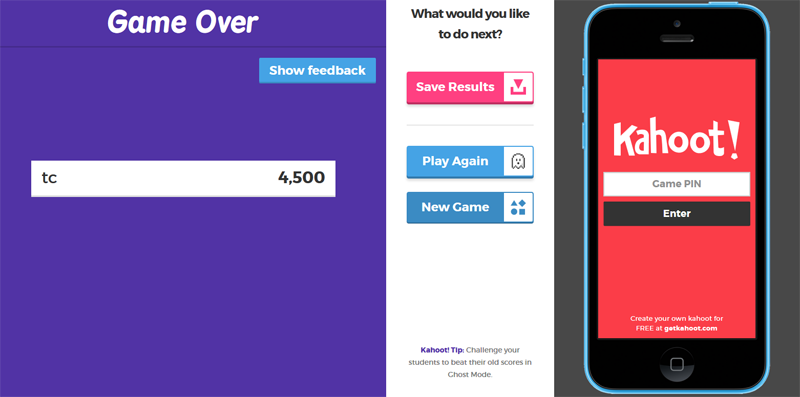
When a quiz is over, the teacher will be able to see the students’ results and also have the option of saving the results.
The results page can be used for tracking student performance, but it can also provide student feedback on the activity, and as such, I can modify my quizzes if need be. Another use of Kahoot that I just started implementing in class at the end of this semester was getting my students to create a class Kahoot to review for exams. In small groups, students had to discuss and decide on a number of pertinent questions for a final exam review. Each group was then responsible for adding several questions to the class Kahoot quiz. As the platform is very user-friendly, quizzes can be easily created and then played during class time. As student engagement seems to have been enhanced with using Kahoot quizzes in the classroom, I look forward to experimenting with the application’s other available features next year.
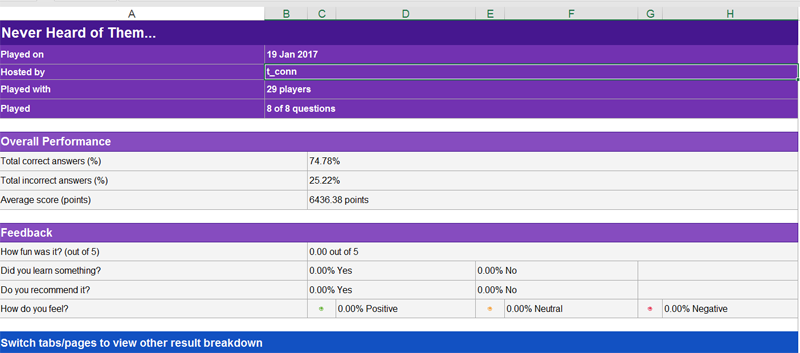
Overall performance and student feedback can be viewed on the results page.

